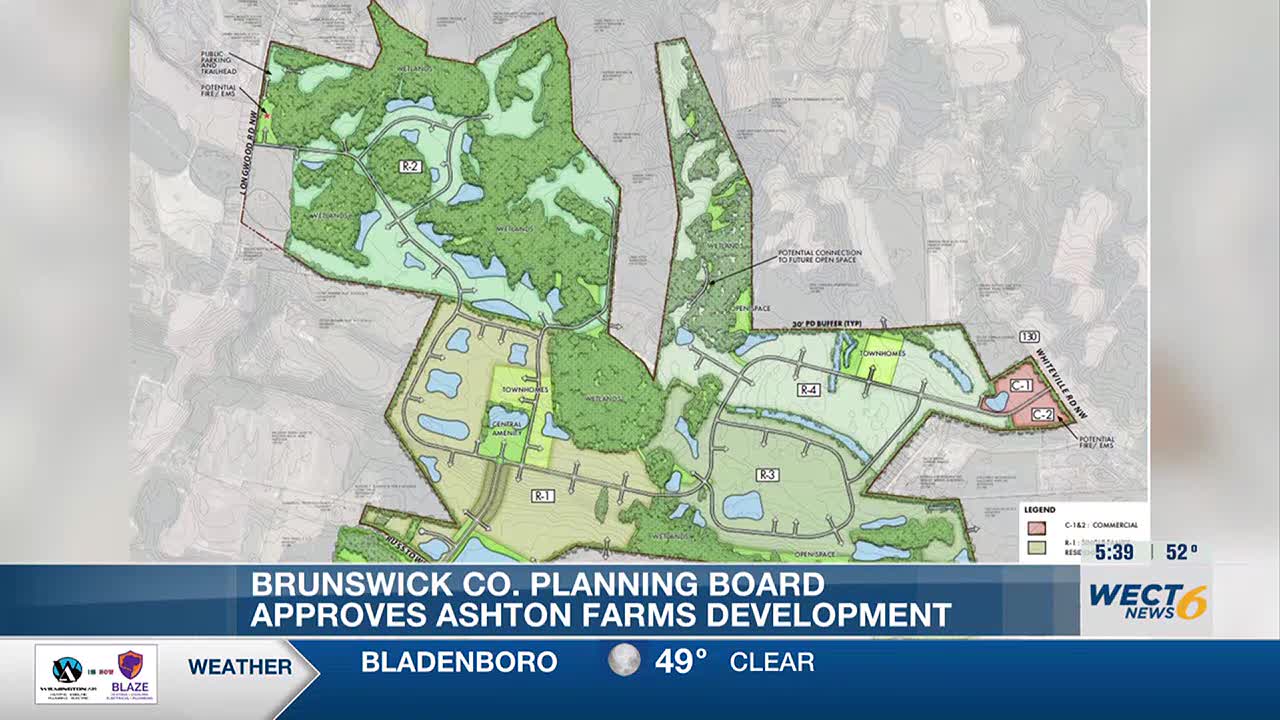Report on Land Use Dispute and Cultural Heritage Preservation in Lake of the Woods County
Executive Summary
A dispute has arisen in Lake of the Woods County, Minnesota, between the county government and private landowners over the fate of a historic building. The conflict centers on the landowners’ efforts to preserve a structure significant to the area’s cultural heritage, which is located within a county highway right-of-way. This situation brings into sharp focus the challenges of balancing infrastructure management with key United Nations Sustainable Development Goals (SDGs), particularly SDG 11 (Sustainable Cities and Communities) and SDG 16 (Peace, Justice and Strong Institutions).
Analysis in the Context of Sustainable Development Goals (SDGs)
SDG 11: Sustainable Cities and Communities
The core of the dispute is directly related to SDG Target 11.4: “Strengthen efforts to protect and safeguard the world’s cultural and natural heritage.”
- Preservation of Cultural Heritage: The Tobin Fishery building is described as one of the last physical remnants of the Lake of the Woods commercial fishing industry. The landowners, Jon and Jim Meikle, are actively attempting to preserve this structure, viewing it as a “significant structure tied to the early commercial fishing heritage.” Their goal to restore the building for community and family use aligns with the objective of safeguarding local culture.
- Threat to Heritage: The county’s consideration to demolish the building, should it be deemed a nuisance, represents a direct threat to this piece of local heritage. The loss of the building would be a loss to the area’s “shared heritage,” undermining the principles of SDG 11.
SDG 16: Peace, Justice and Strong Institutions
The conflict resolution process and the actions of the local government fall under the purview of SDG 16, which emphasizes effective, accountable, and inclusive institutions.
- Institutional Processes (Target 16.6): The disagreement highlights a breakdown in communication and negotiation between citizens and the local government. The requirement for permits for any work within the right-of-way is a standard institutional procedure. However, the landowners’ decision to proceed without a permit after three years of stalled discussions suggests a perceived lack of institutional responsiveness.
- Participatory Decision-Making (Target 16.7): The scheduled public hearing on August 12 represents an opportunity for responsive and participatory decision-making. The board will consider arguments from both the county administration and the landowners to reach a resolution. The outcome will be a reflection of the institution’s ability to balance regulatory enforcement with the community’s historical and cultural values.
Chronology and Key Contentions
Background of the Property
The property in question is a 39.63-acre parcel purchased approximately four years ago by brothers Jon and Jim Meikle. The central feature is an 18×32-foot building from the former Tobin Fishery, which partially sits within a permanent road easement granted to Lake of the Woods County in 1956. The easement agreement stipulated the county would keep the building “as is.”
Timeline of the Dispute
- 2021: Initial negotiations occurred for the county to purchase an additional five feet of right-of-way for $8,000. The agreement failed after the landowners learned of the county’s plans to remove trees in the easement area.
- June 2022: The Lake of the Woods County Public Works Director, Anthony Pirkl, observed the Meikle brothers performing restoration work on the building and placing it on concrete blocks within the right-of-way.
- June 29, 2022: Mr. Pirkl issued a formal letter ordering the work to stop, citing the lack of a permit to work within the county right-of-way.
- July 8, 2022: A follow-up letter from the county gave the landowners two options: move the building out of the right-of-way or the county would remove the blocks and demolish the structure, potentially at the owners’ expense.
- July 18, 2022: The landowners’ attorney, Alan Fish, responded, contending the county lacks jurisdiction and had previously violated the easement in 1978 by piling fill against the building, causing the damage the brothers were attempting to repair.
Current Status and Matters for Resolution
Public Hearing Agenda
The Lake of the Woods County Board has scheduled a public hearing to address the matter. The board will consider two primary issues:
- Whether the building should be classified as a “nuisance or hazardous” structure, which would initiate a process for its removal from the county’s right-of-way.
- Whether the Meikle brothers violated the county’s right-of-way ordinance by working without a permit, which could result in a financial penalty.
The resolution of this case will serve as a local precedent for managing conflicts between infrastructure development and the preservation of cultural heritage, testing the county’s ability to achieve outcomes that are consistent with the broader Sustainable Development Goals.
1. Which SDGs are addressed or connected to the issues highlighted in the article?
SDG 11: Sustainable Cities and Communities
- The article’s central theme is the dispute over preserving a “historic, but dilapidated building” from the commercial fishing era. The Meikle brothers’ goal is to “preserve it for family gatherings” and because it is a “significant structure tied to the early commercial fishing heritage.” This directly connects to the protection of local cultural heritage within a community.
SDG 16: Peace, Justice and Strong Institutions
- The article details a conflict between citizens (the Meikle brothers) and a local government body (the Lake of the Woods County Board). It involves legal processes, property rights, institutional procedures (permits, public hearings), and access to justice (hiring an attorney). This highlights the functioning of local institutions, their transparency, and the legal frameworks governing them.
2. What specific targets under those SDGs can be identified based on the article’s content?
Under SDG 11: Sustainable Cities and Communities
-
Target 11.4: Strengthen efforts to protect and safeguard the world’s cultural and natural heritage.
The entire conflict stems from the desire to preserve the Tobin Fishery building, which is described as “one of the last vestiges of the big lake’s commercial fishing industry” and a “landmark deeply tied to the commercial fishing roots of our county.” The brothers’ efforts to fix the building and their statement that letting it disappear would be a loss to the area’s “shared heritage” directly align with this target.
Under SDG 16: Peace, Justice and Strong Institutions
-
Target 16.3: Promote the rule of law at the national and international levels and ensure equal access to justice for all.
The dispute involves the application of local laws, specifically the “county’s right-of-way ordinance.” The county is considering whether the Meikles violated this ordinance, which could result in a “financial penalty.” In response, the brothers have “retained attorney Alan Fish” to represent them, demonstrating their use of the legal system to seek justice and defend their property rights.
-
Target 16.6: Develop effective, accountable and transparent institutions at all levels.
The article showcases the processes of a local government institution. The county public works director enforces permit requirements, issues formal letters, and explains the rationale for these rules (“so we know what you’re doing… we have your liability insurance on record”). The dispute itself, including the breakdown in negotiations and the feeling of being “bullied or intimidated,” raises questions about the effectiveness and accountability of these institutional interactions.
-
Target 16.7: Ensure responsive, inclusive, participatory and representative decision-making at all levels.
The Lake of the Woods County Board has scheduled a “public hearing” to discuss the building’s fate. This is a direct mechanism for participatory decision-making, allowing stakeholders to be heard. The entire narrative, from the initial stalled negotiations to the upcoming hearing, revolves around the challenge of achieving a responsive and inclusive decision that considers the interests of both the property owners and the county government.
3. Are there any indicators mentioned or implied in the article that can be used to measure progress towards the identified targets?
For Target 11.4 (Protect cultural heritage):
- Expenditure on preservation: The article mentions specific financial figures that can be seen as indicators of private investment in heritage preservation. This includes the “easily five grand” Jon Meikle has invested in materials and the potential for additional “legal fees.”
- Official recognition of heritage sites: The action of contacting the “Minnesota Historical Society to see if the building could be preserved for its historical significance” is an indicator of efforts to get the site formally recognized and protected.
- State of conservation of heritage sites: The building’s description as “dilapidated” but also as “one of the few physical reminders of that era still standing” serves as a qualitative indicator of the current state of this piece of cultural heritage.
For Target 16.3 (Rule of law and access to justice):
- Access to legal representation: The fact that the brothers “retained attorney Alan Fish” is a direct indicator of citizens accessing the justice system through legal counsel.
- Application of local ordinances: The county board’s formal consideration of whether the Meikles “violated the county’s right-of-way ordinance” is an indicator of the rule of law being applied at the local level.
For Target 16.6 & 16.7 (Effective institutions and participatory decision-making):
- Existence of formal procedures: The requirement for a “permit to work within the right-of-way” and the issuance of official cease-and-desist letters are indicators of established institutional processes.
- Mechanisms for public participation: The scheduling of a “public hearing” is a clear indicator of an institution providing a platform for participatory decision-making. The outcome of this hearing would measure the institution’s responsiveness.
4. Table of SDGs, Targets, and Indicators
| SDGs | Targets | Indicators Identified in the Article |
|---|---|---|
| SDG 11: Sustainable Cities and Communities | 11.4: Strengthen efforts to protect and safeguard the world’s cultural and natural heritage. |
|
| SDG 16: Peace, Justice and Strong Institutions | 16.3: Promote the rule of law… and ensure equal access to justice for all. |
|
| 16.6: Develop effective, accountable and transparent institutions at all levels. |
|
|
| 16.7: Ensure responsive, inclusive, participatory and representative decision-making at all levels. |
|
Source: grandforksherald.com







